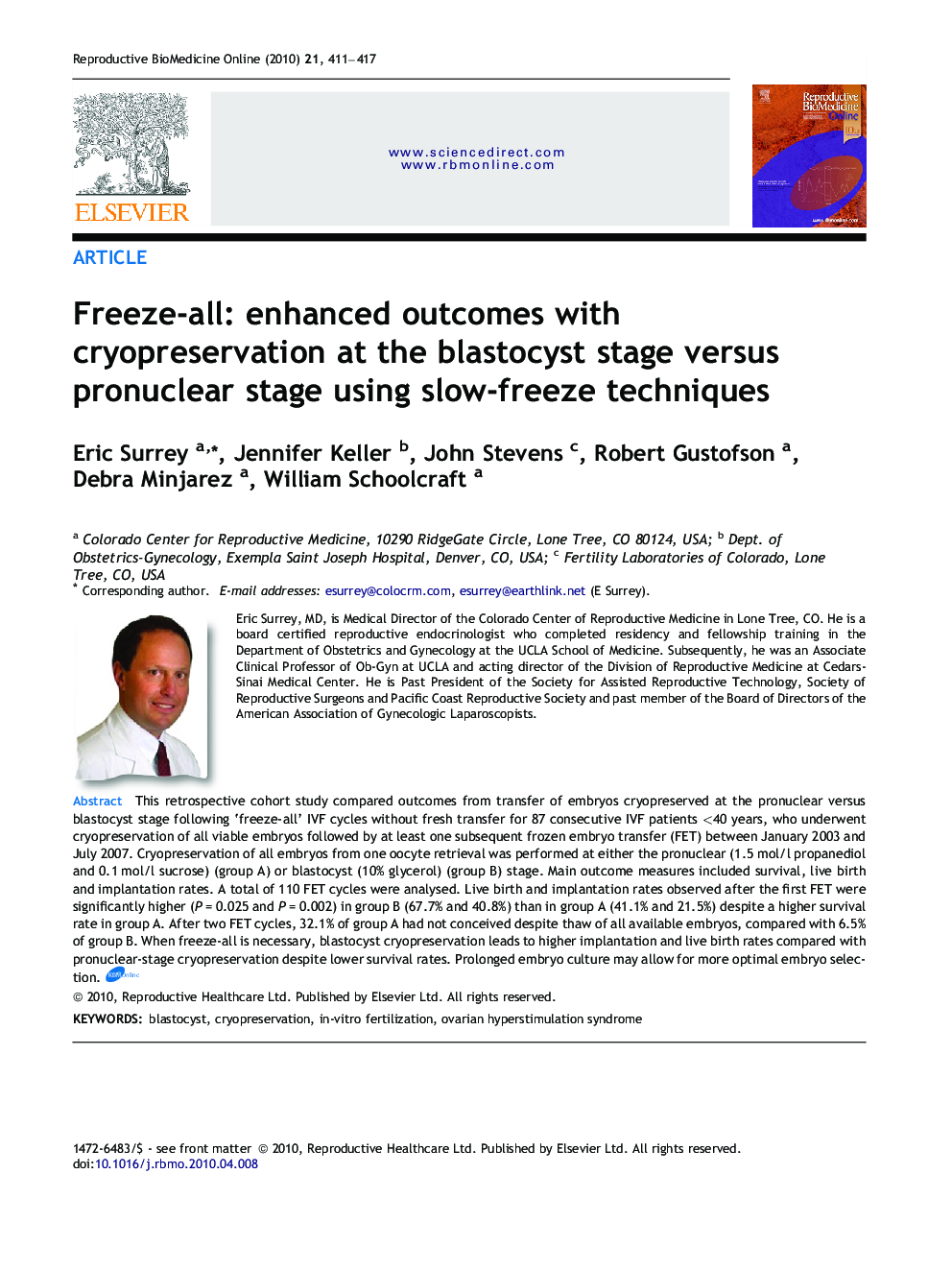| Article ID | Journal | Published Year | Pages | File Type |
|---|---|---|---|---|
| 3971521 | Reproductive BioMedicine Online | 2010 | 7 Pages |
This retrospective cohort study compared outcomes from transfer of embryos cryopreserved at the pronuclear versus blastocyst stage following ‘freeze-all’ IVF cycles without fresh transfer for 87 consecutive IVF patients <40 years, who underwent cryopreservation of all viable embryos followed by at least one subsequent frozen embryo transfer (FET) between January 2003 and July 2007. Cryopreservation of all embryos from one oocyte retrieval was performed at either the pronuclear (1.5 mol/l propanediol and 0.1 mol/l sucrose) (group A) or blastocyst (10% glycerol) (group B) stage. Main outcome measures included survival, live birth and implantation rates. A total of 110 FET cycles were analysed. Live birth and implantation rates observed after the first FET were significantly higher (P = 0.025 and P = 0.002) in group B (67.7% and 40.8%) than in group A (41.1% and 21.5%) despite a higher survival rate in group A. After two FET cycles, 32.1% of group A had not conceived despite thaw of all available embryos, compared with 6.5% of group B. When freeze-all is necessary, blastocyst cryopreservation leads to higher implantation and live birth rates compared with pronuclear-stage cryopreservation despite lower survival rates. Prolonged embryo culture may allow for more optimal embryo selection.
